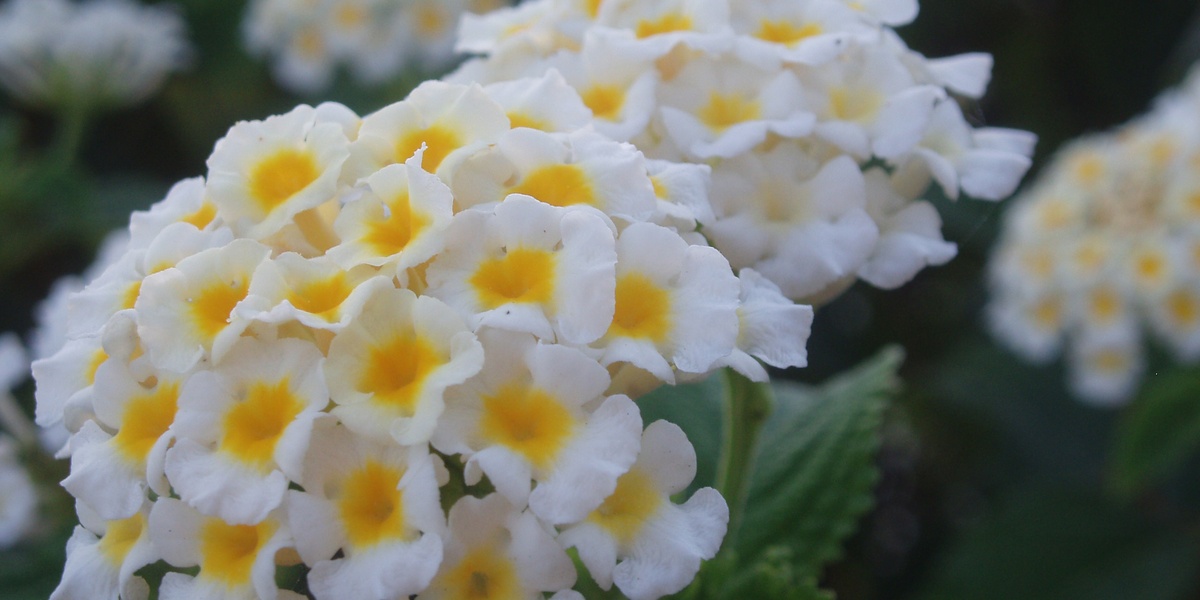Zimbabwe’s landscapes — from the Zambezi floodplains to highveld farms — are home to rich native flora and fauna and also to non-native species that can alter habitats, reduce crop yields, and raise management costs. Understanding which organisms are present helps land managers, gardeners, and policymakers prioritize action and monitor spread.
There are 32 Invasive Species in Zimbabwe, ranging from Argentine Ant to Yellow Bells. For each species the table shows Scientific name,Type,Distribution in Zimbabwe — you’ll find below.
Which invasive species should farmers watch for first in Zimbabwe?
Priorities depend on crop and ecosystem, but generally focus on species that reduce yields or block watercourses (fast-spreading weeds and aquatic plants), pests that damage livestock or stored grain, and aggressive plant invaders that outcompete pastures. Check the list below for species present in your region and consult local extension services for practical control methods tailored to your farm.
How do I report a suspected invasive species I find near me?
Record clear photos, note the exact location (GPS or nearby landmarks), and gather basic details (date, habitat, abundance). Then contact your local agricultural extension office, the environmental ministry or parks authority, or a university department; many organizations accept emailed reports and will advise on safe specimen handling and next steps.
Invasive Species in Zimbabwe
| Name | Scientific name | Type | Distribution in Zimbabwe |
|---|---|---|---|
| Lantana | Lantana camara | Plant | Widespread |
| Water Hyacinth | Eichhornia crassipes | Plant | Widespread in major dams |
| Kariba Weed | Salvinia molesta | Plant | Lake Kariba, Zambezi River, many dams |
| Black Wattle | Acacia mearnsii | Plant | Eastern Highlands, central highveld |
| Guava | Psidium guajava | Plant | Widespread in mesic areas |
| Jacaranda | Jacaranda mimosifolia | Plant | Widespread, especially urban/peri-urban |
| Siam Weed | Chromolaena odorata | Plant | Eastern and northern Zimbabwe |
| Prickly Pear | Opuntia stricta | Plant | Matabeleland, drier lowveld areas |
| Syringa | Melia azedarach | Plant | Widespread, especially along rivers |
| Pompom Weed | Campuloclinium macrocephalum | Plant | Highveld grasslands, spreading |
| Parthenium Weed | Parthenium hysterophorus | Plant | Spreading in lowveld and central areas |
| Blackberry | Rubus niveus | Plant | Eastern Highlands |
| Yellow Bells | Tecoma stans | Plant | Widespread in urban and disturbed areas |
| Castor Oil Plant | Ricinus communis | Plant | Widespread in disturbed areas |
| Silver Wattle | Acacia dealbata | Plant | Eastern Highlands |
| Spreading Pine | Pinus patula | Plant | Eastern Highlands |
| Largemouth Bass | Micropterus salmoides | Vertebrate | Widespread in dams and rivers |
| Nile Tilapia | Oreochromis niloticus | Vertebrate | Zambezi system, various dams |
| Rainbow Trout | Oncorhynchus mykiss | Vertebrate | Eastern Highlands streams |
| Common Carp | Cyprinus carpio | Vertebrate | Widespread in dams and slow rivers |
| Common Myna | Acridotheres tristis | Vertebrate | Widespread in urban/agricultural areas |
| House Crow | Corvus splendens | Vertebrate | Localized, high-risk areas |
| Feral Pigeon | Columba livia | Vertebrate | Widespread in urban areas |
| House Sparrow | Passer domesticus | Vertebrate | Widespread in human-settled areas |
| Red-claw Crayfish | Cherax quadricarinatus | Invertebrate | Zambezi River system, Lake Kariba |
| Fall Armyworm | Spodoptera frugiperda | Invertebrate | Widespread in agricultural areas |
| Larger Grain Borer | Prostephanus truncatus | Invertebrate | Widespread in stored grain |
| Tomato Leaf Miner | Tuta absoluta | Invertebrate | Widespread in horticultural areas |
| Maize Stalk Borer | Chilo partellus | Invertebrate | Widespread in agricultural areas |
| Argentine Ant | Linepithema humile | Invertebrate | Localized in urban/agricultural areas |
| Myrtle Rust | Austropuccinia psidii | Pathogen | Widespread where host plants occur |
| Chytrid Fungus | Batrachochytrium dendrobatidis | Pathogen | Widespread in amphibian habitats |
Images and Descriptions
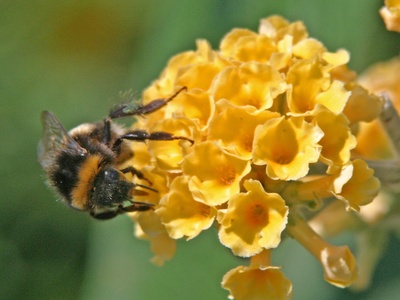
Lantana
Originating from the Americas, this thorny shrub forms dense, impenetrable thickets. It outcompetes native plants, is toxic to livestock, and its berries are spread widely by birds. It is a declared noxious weed subject to control efforts.

Water Hyacinth
A free-floating aquatic plant from South America that can double its population in weeks. It clogs waterways, blocks sunlight for native aquatic life, and damages infrastructure at dams like Lake Chivero. Biological and mechanical control are used.
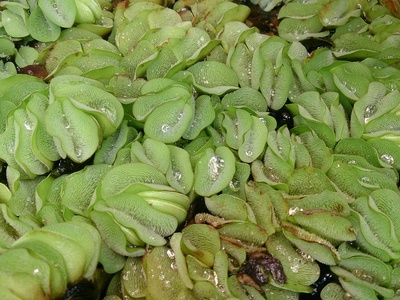
Kariba Weed
A free-floating fern from Brazil, famous for covering over 20% of Lake Kariba in the 1960s. It forms dense mats that block sunlight, deoxygenate water, and hinder fishing. Biocontrol using a specific weevil has been very successful.

Black Wattle
An Australian tree introduced for timber and tannin. It invades grasslands and riverbanks, consuming vast amounts of water and altering soil chemistry. It forms dense stands that fuel intense fires and outcompete native flora.

Guava
Originally from tropical America, this fruit tree has escaped cultivation to become a serious invader. It forms dense, single-species thickets in grasslands and woodlands, displacing native flora and reducing grazing land for wildlife and livestock.

Jacaranda
A popular ornamental tree from South America, famed for its purple flowers. It has naturalized and become invasive, creating dense stands that shade out and suppress the growth of indigenous vegetation, particularly in grasslands and disturbed areas.

Siam Weed
A fast-growing shrub from the Americas that scrambles over other plants, forming dense, tangled masses. It smothers native vegetation, reduces biodiversity, and is a major problem in pastures and conservation areas, being toxic to livestock.
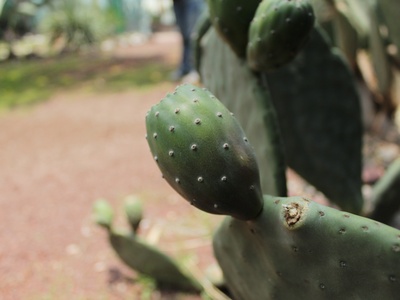
Prickly Pear
A cactus from the Americas, this species forms dense, spiny, and impenetrable thickets. It drastically reduces grazing capacity for livestock and wildlife, injures animals with its spines, and outcompetes native grasses in arid savanna environments.
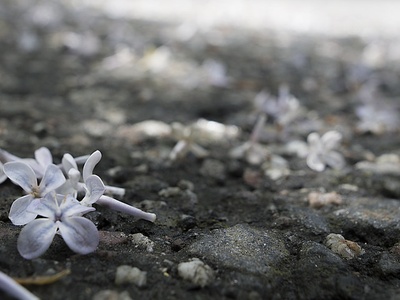
Syringa
An ornamental tree from Asia that has become a widespread invader in disturbed areas and along watercourses. It grows quickly, produces abundant fruit spread by birds, and forms dense stands that displace indigenous riparian vegetation. Its berries are poisonous.
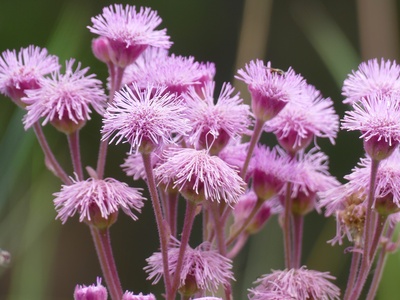
Pompom Weed
A perennial herb from South America with distinctive pink “pompom” flowers. It is a major threat to grasslands, invading pastures and conservation areas where it outcompetes native grasses, reducing grazing value and biodiversity.

Parthenium Weed
An aggressive annual weed from the Americas, also known as “famine weed.” It invades croplands and pastures, reducing yields. Its pollen causes severe allergic reactions in humans, and it can cause dermatitis in livestock.

Blackberry
Known as Mysore Raspberry, this thorny, scrambling shrub from Asia invades forest margins, plantations, and stream banks. It forms impenetrable thickets that smother native plants and block access for animals and people in high-rainfall areas.

Yellow Bells
A popular ornamental shrub from the Americas with bright yellow flowers. It has escaped gardens and readily invades roadsides, riverbanks, and disturbed bushland, forming dense stands that suppress native plant regeneration.
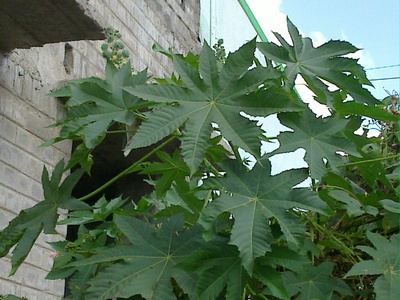
Castor Oil Plant
A fast-growing shrub that aggressively colonizes disturbed land, riverbanks, and roadsides, outcompeting native pioneer species. While its origin is debated, it acts as an invasive alien in many habitats. All parts, especially the seeds, are highly toxic.

Silver Wattle
An Australian tree, similar to Black Wattle, that has become a major invader in the high-rainfall Eastern Highlands. It spreads rapidly, transforming sensitive montane grasslands and fynbos into dense woody thickets, altering water cycles.
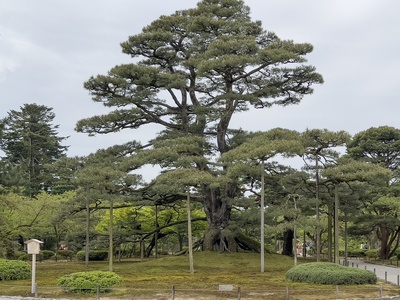
Spreading Pine
A pine species from Mexico, widely used in commercial forestry. It has escaped plantations and is now a major invader of montane grasslands in the Eastern Highlands, where it shades out native flora and increases fire risk.

Largemouth Bass
A popular angling fish from North America. This voracious predator has devastated native fish and amphibian populations in Zimbabwe’s freshwater ecosystems. It alters food webs and has eliminated smaller native species in many dams.
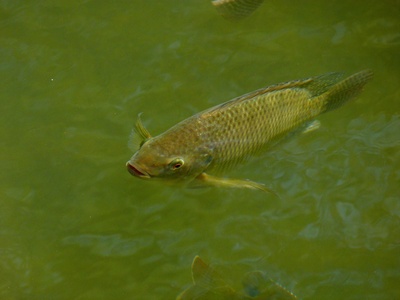
Nile Tilapia
Introduced from North and West Africa for aquaculture. It has escaped into natural waterways where it hybridizes with the native Mozambique Tilapia (*O. mossambicus*), threatening its genetic purity and long-term survival.

Rainbow Trout
A predatory fish from North America, introduced for angling into the cool streams of Nyanga and Vumba. It preys heavily on native fish, frogs, and invertebrates, severely impacting the unique aquatic ecosystems of the Eastern Highlands.
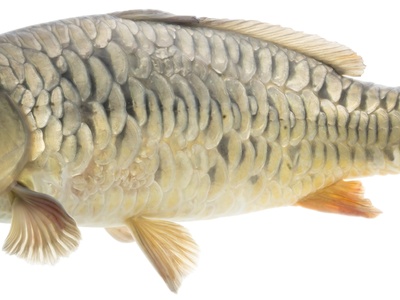
Common Carp
An omnivorous fish from Eurasia introduced for angling. Its bottom-feeding behavior stirs up sediment, increasing water turbidity and uprooting aquatic plants. This degrades water quality and destroys habitat for native fish and invertebrates.

Common Myna
An aggressive bird from Asia, now common in towns like Harare and Bulawayo. It nests in cavities, aggressively displacing native birds like barbets and starlings. It also damages fruit crops and can be a noisy nuisance in urban environments.
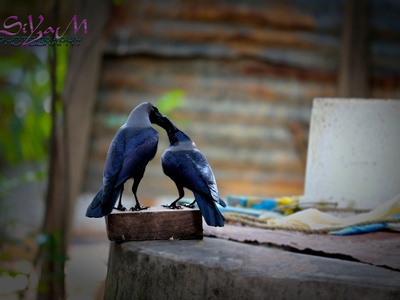
House Crow
An intelligent and aggressive crow from Asia. It is a major threat, known to prey on native bird chicks, raid crops, and spread disease. While not widespread, its presence is closely monitored as it could have severe ecological impacts.

Feral Pigeon
The common city pigeon, descended from domesticated rock doves from Eurasia. It fouls buildings with corrosive droppings, can spread diseases to humans and poultry, and competes with native rock-dwelling birds for nesting sites in some areas.

House Sparrow
Originating in Eurasia, this bird is now ubiquitous around human settlements. It can be an agricultural pest and aggressively competes with native sparrows and other small, cavity-nesting birds for food and nest sites, especially in urban areas.
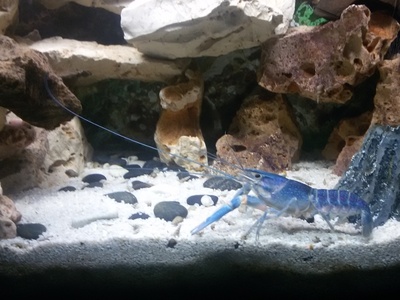
Red-claw Crayfish
An Australian crayfish that escaped from aquaculture. It has established large populations in Lake Kariba, where it destroys aquatic vegetation, burrows into banks causing erosion, and outcompetes native crabs for food and shelter.
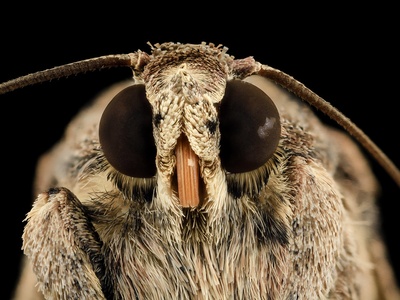
Fall Armyworm
A moth native to the Americas that arrived in Africa around 2016. Its caterpillars are a devastating pest, causing extensive damage to maize, a staple food crop in Zimbabwe. It threatens national food security and requires intensive management.
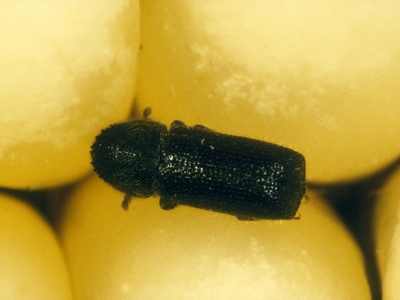
Larger Grain Borer
A beetle native to Central America, it is a devastating pest of stored maize and dried cassava. It can infest very dry grain, turning it into useless dust and causing massive post-harvest losses for small-scale farmers.
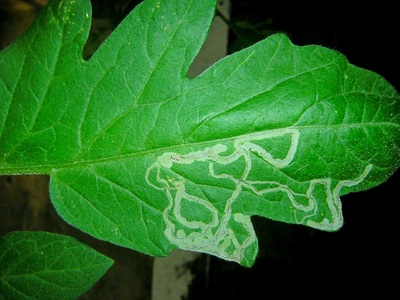
Tomato Leaf Miner
A tiny moth from South America. Its larvae mine inside tomato leaves, stems, and fruit, causing devastating crop losses of up to 100%. It has become the most significant pest for tomato farmers in Zimbabwe since its arrival.
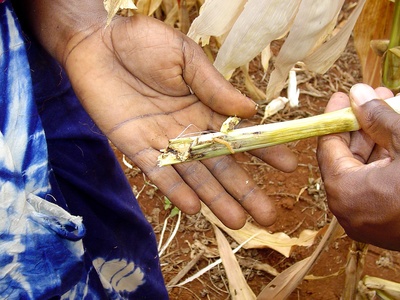
Maize Stalk Borer
A moth stem borer originating from Asia. It has displaced native borer species in many areas to become the dominant pest of maize and sorghum. Its larvae tunnel into plant stems, causing significant yield losses for farmers.

Argentine Ant
A tiny but highly aggressive ant from South America. It forms massive super-colonies that displace almost all native ant species, disrupting natural processes like pollination and seed dispersal that rely on native ants.

Myrtle Rust
A fungal pathogen from South America that attacks plants in the myrtle family. In Zimbabwe, it affects commercial eucalyptus and invasive guava, but poses a significant future threat to the country’s native Myrtaceae species.

Chytrid Fungus
A microscopic aquatic fungus responsible for the devastating global amphibian disease, chytridiomycosis. It has been detected in frogs in Zimbabwe and is considered a major factor in amphibian population declines worldwide.
